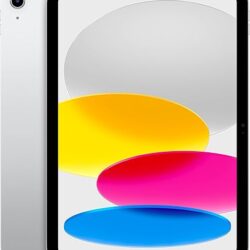二、动词的语法特点 Grammatical features
(一)汉语的动词没有狭义的形态变化。 There is no strict morphological change in Chinese language.
 亚马逊导购
亚马逊导购  读新闻学外语
读新闻学外语  卑诗省当天新盘
卑诗省当天新盘
汉语里动词的形式是不变的,动词的形式不受人称、性别、单 复数、时间等的影响。例如: The form of a verb remains unchanged under all circumstance. Differences in person, gender, number of time do not require changes in the form of a verb. For example:
我买本子。
我们唱歌。
他唱民歌。
你们唱京剧。
她买樱桃。
她们明天买家具。
汪先生喜欢游泳。
白小姐喜欢滑雪。
朋友们都喜欢上网。
爷爷看电视新闻。
奶奶看电视连续剧。
年轻人看足球比赛。
(二)多数动词后边可以带宾语。
Most of verbs can take objects.
(三)多数动词后边可以加助词“了”、“看”、“过”。例如:
The aspectual particles 了 (le), 着(zhe), 过(guo) can be suffixed to most verbs. For example:
- 动词 +助词“了”一一表示动作已经完成
Verb + “了” -to indicate the completion of an action
我看了一本有意思的小说。(已经看完了)
I have read a very interesting novel.
2.动词 +助词“着”一表示动作在进行或状态在持续
Verb + “着” -to indicate the continuous state of an action
他看着小说呢。(正在看)
He is reading a novel.
窗户开着呢。(处于开的状态)
The window is still open.
3. 动词+助词“过”一一表示动作曾发生或曾经历过
Verb + “过” -to express an action as past experience
我看过这个电影。(知道电影的内容)
I’ve seen this movie (and I know what it is about).
(四)动词后边可以带各类补充成分。例如:
Various complements can occur after verbs. For example:
洗干净 摘下 走一趟 待一会儿
搬不动 带来 起得很早 站起来
(五)动词前边可以加各类修饰成分。例如:
Verbs can be preceded by various modifiers. For example:
也看 都有 只是 就去 很尊重
明天来 能讲 努力学习 高兴地唱 跟他握手
(六)否定形式是动词前边用否定副词“不”或“没(有)”。例如:
Verbs are negated by the negative adverbs or & (4). For example:
我不去。
他没有小说。
他不在这儿。
他没(有)来。
(七)不少动词可以重叠,双音节动词的重叠形式是 ABAB。例如:
Many verbs can be used reduplicatively: the reduplicative form for dissyllabic verb is ABAB. For example:
说说 看看 研究研究 整理整理
(八)能用正反式(即并列肯定形式和否定形式)表示提问。例如:
The affirmative-negative questions can be formed by putting the affirmative and negative forms together. For example:
看不看? 洗不洗?
是不是? 讨论不讨论?
有没有?
(九)有些名词、形容词后面可以加词尾“化”构成动词。例如:
Some nouns and adjectives can be turned into verbs by adding the suffix 1Ł to them. For example:
| 名词 Nouns | 动词 Verbs |
| 工业 | 工业化 |
| 氧 | 氧化 |
| 现代 | 现代化 |
| 形容词 Adjectives | 动词 Verbs |
| 美 | 美化 |
| 绿 | 绿化 |
| 合理 | 合理化 |








